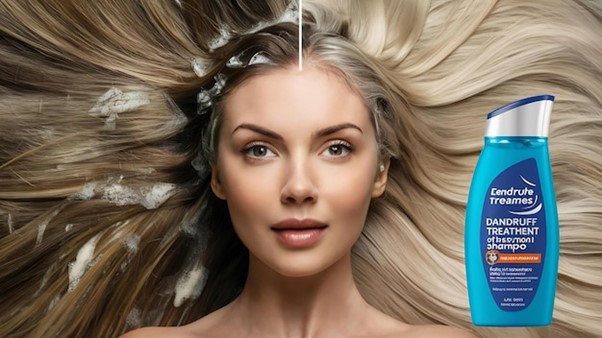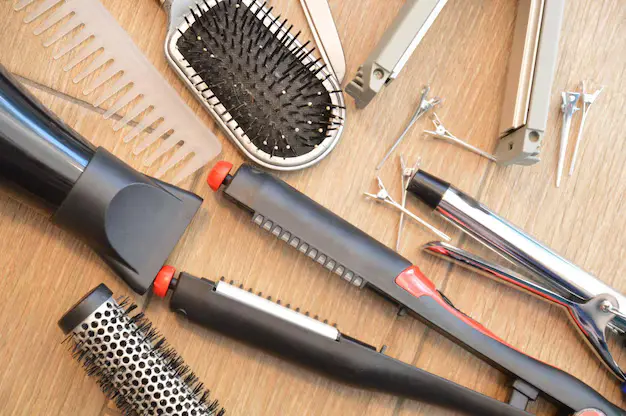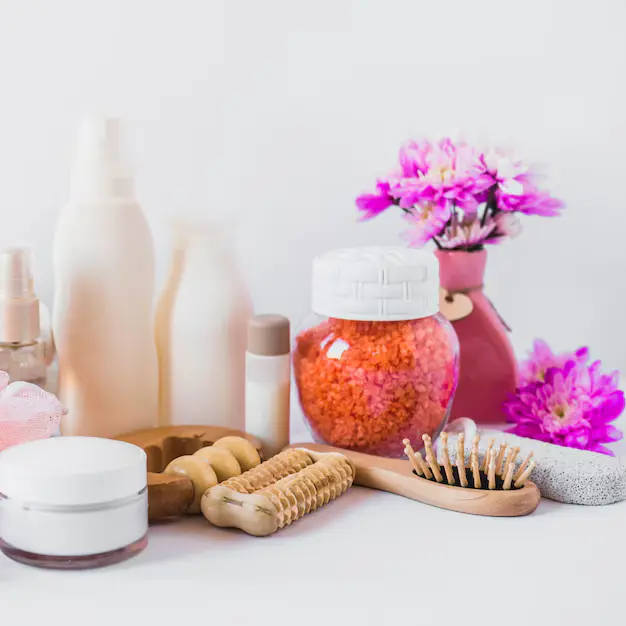
How to Choose the Right Shampoo for Your Hair Type in 2025
Select a shampoo that’s suited for your hair. Markets offer too many varieties of shampoo, but finding the sort that works for your hair type is a challenge. Similarly, your hair needs a proper shampoo suited to your hair type, such as oily, dry, curly, or fine hair types, alongside your healthy hair, which must appear beautiful too. A complete guide outlines all essential elements for finding the best shampoo suitable for your hair type.
Tips for Healthy Hair
For hair growth, it’s vital to feed your hair from root to tip. Choosing the right shampoo — along with a proper hair care routine can go a long way toward maintaining your hair health.
- Avoid Over-Washing: Over-shampooing your hair removes natural oils and causes hair dryness. Shampoo your locks two to three times a week, or as needed.
- Use Cold Water: When washing your hair, rinse hair with cool water after shampooing to help seal the hair cuticle (bark of the hair) and retain moisture.
- Use Heat Protection: Use a heat protestant spray before styling if you use any heat styling tools to prevent damage.
- Keep a Balanced Diet: Nutrition is very important to hair health. Consuming protein, vitamins and omega-3 fatty acid-rich foods will help to improve production of stronger, healthier hair as well.
Understanding Your Hair Type
Reading the label of your shampoo is not enough. Deciding whether your strands are dry, greasy, fine, curly or thick will direct your selection. Here’s a rundown of the different types of hair and the shampoos to best nourish them
- Oily Hair People with oily hair should select cleansing shampoos that eliminate oil but do not scrub vigorously. Seek out clarifying shampoos or those made for oily scalp treatment. You can use organic hair oil for your hair problem.
- Dry Hair: Dry hair needs to be drier. Select shampoos according to your hair type. Greasy hair needs clarifying shampoo; dry hair needs moisturizing ingredients.
- Curly or Wavy Hair: What you need to be wary of for Curly or Wavy Hair— It is curly hair shampoo, which is not only used for washing but also to nourish the hair and curls deeply. When washing your hair, pick shampoo-free sulfate to allow them to hold their oils.
- Fine or Thin Hair: For fine or thin hair, volumizing shampoos that contribute thickness and volume. Try to find low-weight formulas so this will not weigh down your hair.
- Thick or Coarse Hair:
Thick, coarse hair suits shampoos that contain deep conditioning elements such as glycerin, avocado oil, or coconut oil since they smooth and soften the strands of hair.

Mielle Organic Oil
- Biotin-infused hair oil
- Soothes dry scalp & split ends
- Safe for all hair types

Hair Care Routine Steps for Healthy Hair
Selecting the appropriate shampoo is just one aspect of an entire hair care routine. Here’s a step-by-step guide to healthy hair:
- Cleansing: Wash your hair depending upon what your hair type is. Rinse well with lukewarm water.
- Conditioning: Apply conditioner for your hair type—moisturizing for dry hair, volumizing for fine hair, or hydrating for curly hair.
- Oiling: Use a hair oil or serum to seal in moisture and prevent frizz, especially on dry or curly hair.
- Styling: Use less heat when you style your hair, and think about heatless styles (like braids or buns) to minimize hair damage.
- Protection: Use a leave-in conditioner or styling cream that protects against environmental damage or harsh UV rays.
What are the Essential Products for Good Hair?
To growth hair health, you will need a few key products in your arsenal. Here’s a close-up of the details you really need:
- Shampoo: A shampoo specific to your hair type.
- Conditioner: A moisturizing, hair detangling conditioner.
- Hair Mask: For intensive moisture and repair once a week.
- Leave-In Conditioner: Aids in keeping skin hydrated all day long.
- Heat Protectant: Essential for everyone who uses heat styling tools.
- Hair Oil: It acts for shine, smoothness, and nourishment.
All Hair Repair Products
If your hair is damaged, then you need to opt for the products that will help it get repaired and, after that, restore the strength in it. Opt for those infused with proteins, vitamins, and oils that can help nourish it and prevent damage. Keratin or biotin hair masks can also be very useful if you are looking to repair the strength and texture of your hair.
Hair Care Routine for Long Hair
Long hair needs a little extra care too. To protect the health and length of your mane, follow these tips to avoid split ends:
- Shampoo with Care: Opt for a gentle cleanser that nourishes the hair rather than stripping it of oils.
- Conditioner Application: Put conditioner on the ends, where the hair is older and more susceptible to damage.
- Deep Conditioning: Once a week, treat yourself to a rich hair mask or oil treatment to keep your locks hydrated and healthy.
- Trim Regularly: How To Maintain Long Hair: Trim Regularly A trim is essential for even long hair to prevent split ends and maintain a healthy look.

Frequently Asked Questions (FAQs)
-
What is a daily routine for hair care?
A daily routine in taking care of healthy hair is combing with a gentle brush and using a mild shampoo and conditioner in need. Use leave-in conditioner for added moisture. -
How should I take care of my hair with affordable products?
Budget-friendly hair care doesn’t have to translate to poor quality. Search for more natural, budget-friendly ingredients such as coconut oil, shea butter, and sulfate-free shampoos. These elements feed your hair without breaking the bank. This organic hair oil is easily available; you can get it here. It is cost-effective. - What is your hair care routine weekly?
So, a week would involve washing your hair 2-3 times, deep conditioning once a week, and then 2-3 times, you would apply a hair oil or serum for hydration. Getting a trim every 6-8 weeks also helps to keep split ends at bay. - What is your routine for soft hair?
If your goal is soft hair, emphasize moisturizing. Use moisturizing shampoos and conditioners, apply a leave-in conditioner, and shop for a hair mask to use once a week. Do not overheat your hair or use heat-styling appliances too often. -
What is the best way to maintain your hair?
Healthy hair needs care—washing, conditioning, hydration. Minimize heat styling, protect your hair from the sun, and cut it regularly to remove split ends. - How to establish the right hair care routine?
It all starts with knowing your hair type in order to create the appropriate routine. Choose products that address your specific needs, be it hydration for parched hair or volume for second-, third-, or fourth-day fine hair. For results, stick with your plan and be consistent. - What is the secret to amazing hair?
The key to great locks is persistence. Maintain a regular schedule, ward your hair off of damage, feed it the right products, and you shall wait for it to be more lenient to grow out—and flourish.” - What hair products do you use?
I like to use a sulfate-free shampoo, a moisturizing conditioner, and once a week, a deep conditioning mask. I also apply a heat protectant spray when heat styling and a nourishing hair oil on the ends for shine. - What is the brutal truth about hair care products?
Not all hair-care products deliver on their promises. Be wary of miracle-working products. Look at the ingredients and select products with natural and moisturizing ingredients like oils and proteins. - Is proper hair care a time-consuming and costly affair?
Hair care can be as simple or as complex as you want it to be. However, premium hair care products are expensive, but good and cheap alternatives are available. In terms of time, a decent hair care routine doesn’t take much more time than simply washing and conditioning.
Selecting the right shampoo for your hair type. This will ensure that your hair is nourished, hydrated, and protected—understanding your hair’s needs and choosing products accordingly. The combination with the right products and consistency in your routine will make all the difference when it comes to the health and appearance of your hair. No matter if you’re looking for volume or moisture or repair, you should always choose products that are right for your hair type to get the best results possible.





